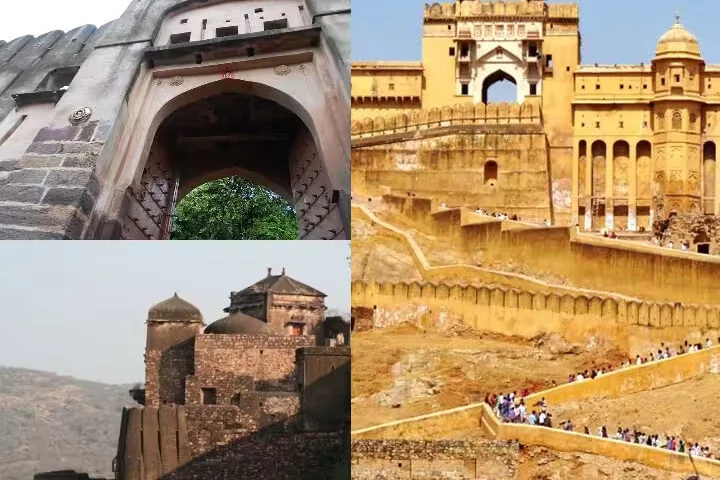Nestled amidst the lush greenery and rugged terrains of Rajasthan, the Ranthambore Fort is a treasure trove of history and architecture. Situated within the Ranthambore National Park, this UNESCO World Heritage Site offers a blend of natural beauty, wildlife, and centuries-old heritage, making it an unmissable destination for travelers.
A Gateway to the Past
Built in the 10th century by the Chauhan rulers, the Ranthambore Fort has witnessed the rise and fall of numerous dynasties, from the Chauhans to the Delhi Sultanate and later the Mughals. Its strategic location atop a hill provides breathtaking views of the surrounding forest and lakes. The fort served as a royal hunting reserve before becoming a symbol of Rajput valor and resistance against invasions.
As you step into the fort, you’re greeted by massive gates, intricate stone carvings, and remnants of ancient temples, palaces, and reservoirs. The walls echo tales of bravery, particularly the valiant efforts of King Hammir Dev Chauhan against Alauddin Khilji.
Must-See Attractions Within the Fort
- Ganesh Temple: This centuries-old temple dedicated to Lord Ganesh attracts thousands of devotees annually. Its peaceful ambiance and spiritual significance add to the fort’s charm.
- Trinetra Ganesh Temple: Known for housing the three-eyed idol of Lord Ganesh, this temple is a unique feature of the fort.
- Hammir’s Court: A historic spot that reflects the grandeur of the Rajput era.
- Jain Temples: These temples, dedicated to Lord Sumatinath and Lord Sambhavnath, showcase exquisite craftsmanship and are a testament to the religious harmony of the time.
- Badal Mahal: Also known as the Palace of Clouds, this area offers panoramic views of the surroundings, perfect for photography enthusiasts.
Beyond the Fort: Ranthambore National Park
Ranthambore National Park, one of India’s premier wildlife sanctuaries, surrounds the fort. Known for its population of majestic Bengal tigers, the park is a paradise for wildlife lovers and photographers. A safari here provides opportunities to spot leopards, sloth bears, crocodiles, and a variety of bird species.
The park’s diverse landscape, comprising dense forests, open grasslands, and serene lakes, complements the historical aura of the fort. Whether you’re exploring the lush greenery or witnessing a tiger prowling in its natural habitat, the experience is truly unforgettable.
Recommendations for Visitors
- Plan a Day Tour: Combine your visit to the fort with a safari in Ranthambore National Park for a wholesome experience.
- Best Time to Visit: October to April, when the weather is pleasant, and wildlife sightings are frequent.
- How to Reach: The fort is well-connected by road, with the nearest town being Sawai Madhopur. Trains and buses are easily accessible.
- What to Carry: Comfortable walking shoes, water, sunscreen, and a camera to capture the beauty of the fort and park.
- Hire a Guide: A local guide can provide invaluable insights into the history and significance of the fort and park.
- Stay Options: Choose from luxurious resorts or budget-friendly hotels in Sawai Madhopur to suit your needs.
Why You Should Visit
Ranthambore Fort is not just a historical landmark but a gateway to Rajasthan’s rich heritage and natural wonders. Whether you’re a history buff, a wildlife enthusiast, or a nature lover, this destination offers something for everyone. Visitors consistently praise its serene ambiance, rich history, and the thrill of exploring the nearby national park.
Book your trip today and embark on a journey to the heart of Rajasthan’s history and wilderness. The Ranthambore experience promises memories that will last a lifetime!

